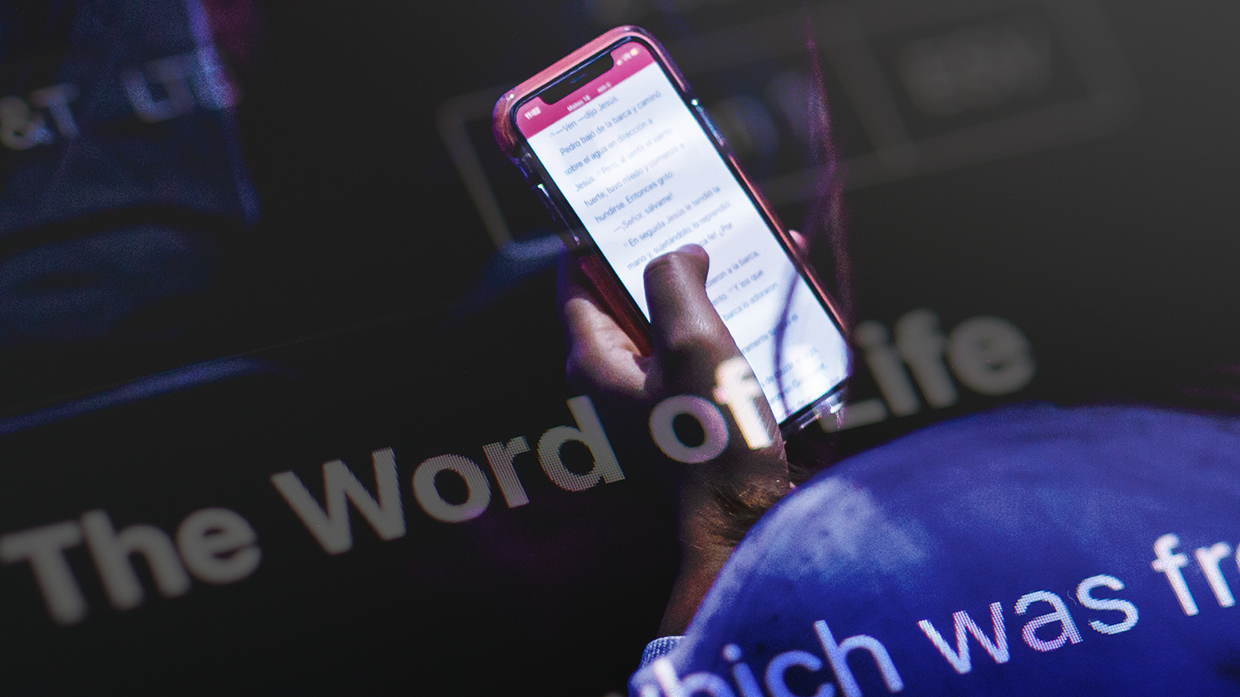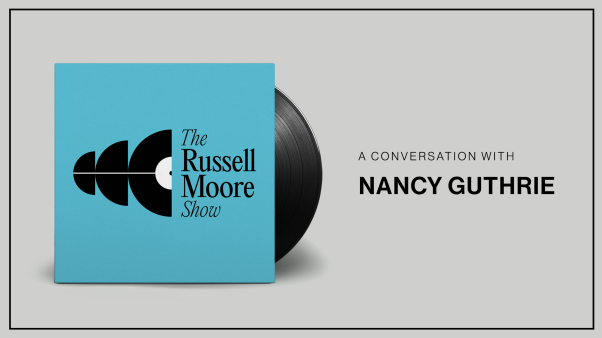Christianity is a religion of the Word. Christians are a “People of the Book.” These distinctives have defined the Christian faith from the beginning, even before the age of print that brought us books. As we enter what many are calling a post-literate age, pastors can help remind people that the essence of the Christian faith centers on the Word (and words).
From the carving of the Ten Commandments to the writing of the Torah to the copying and distribution of letters in the early church, God’s plan was for his people to read. However, as the way we read in this digital age changes, so too the character of the church will change. How will those reading habits affect the way we interact with the Bible? How will the way people read the Bible alter the church body?
A Unique Relationship with Words
Long before the printing press and widespread literacy, God was cultivating a relationship with his chosen people focused on the written word. The words God carved into stone at Mount Sinai included a caution against images, setting up a peculiar word-based relationship with his followers that contrasted starkly with the image-worshiping pagan nations surrounding the Israelites (an observation made by Neil Postman in Amusing Ourselves to Death).
This trend continues through church history, according to David Lyle Jeffrey in People of the Book. Medieval paintings frequently depict Mary, other biblical figures, and church fathers holding the Bible. Such images, even—or especially—when anachronistic (bound books did not exist when Mary bore Christ), symbolize the centrality of reading to Christian faithfulness and point out the concrete, tangible nature of the Word. In many of these paintings, the subject is depicted with a finger inserted into the book’s pages, suggesting active reading and reflecting how Thomas needed to put his fingers into Christ’s body in order to know and believe. God’s Word, both written and incarnate, beckons us to come close and engage in a tactile relationship.
Despite the centrality of the written word from the beginning of God’s revelation, many generations of believers were unable to read the Bible for themselves. Before the Reformation, biblical words passed through priests, supplemented by images depicted in stained glass windows and in itinerant drama troupes performing biblical stories. These symbols offered rich beauty, but images alone cannot convey the abstractions of doctrine. Thus in the pre-literate age preceding the Reformation, the Bible was delivered and understood only in pieces.
The Reformation’s focus on reading and the resulting age of literacy it birthed were, in some ways, the culmination of the logocentrism that runs through the Bible and God’s relationship with creation. “In the beginning was the Word, and the Word was with God, and the Word was God” from John 1:1, is a direct echo of Genesis 1, when God created the world through his words. While the “word of the Lord” refers to all the ways God reveals himself, whether spoken (Gen. 1), in a vision (Gen. 15:1), or written (Exod. 24:12; 2 Tim. 3:16), his word is always logical, linear, and coherent. Likewise, the key feature of a literate age is cultivation, not only of the ability to read but of the propensity to think in a logical, linear, coherent fashion.
Paper or Pixels?
The act of reading is not natural to the human brain. While scientists see reading in terms of evolution and adaptation, reading is, in some way, supernatural or at least unnatural.
In her book Reader, Come Home: The Reading Brain in a Digital World, neuroscientist Maryanne Wolf explains that reading is not hardwired in the human brain the way language is. Not only does the remarkable plasticity of the human brain make reading possible, but the activity of reading creates new circuits in the brain. These aid in learning abstract and creative concepts that go beyond the brain’s genetically programmed functioning. Reading demands “extraordinary cerebral complexity,” Wolf says, and the brain requires years for “deep-reading processes to be formed.” Our reading habits, therefore, have the potential to shape our brains, for good or ill.
Deep reading activates regions of the brain related to touch, motion, and feeling, and helps develop the background knowledge that we bring to further reading and living. “The consistent strengthening of the connections among our analogical, inferential, empathic, and background knowledge processes generalizes well beyond reading,” Wolf explains. “When we learn to connect these processes over and over in our reading, it becomes easier to apply them to our own lives.” Her findings seem to confirm the truth of Psalm 119:11: “I have hidden your word in my heart that I might not sin against you.”
Cognitive science shows that our brains work one way when accustomed to reading in logical, linear patterns and another way when continually bouncing from tweet to tweet, picture to picture, and screen to screen. Wolf’s research shows that reading on digital devices does not create the same kind of brain circuits as deep reading. In The Shallows: What the Internet is Doing to Our Brains, Nicholas Carr cautions, “Calm, focused, undistracted, the linear mind is being pushed aside by a new kind of mind that wants and needs to take in and dole out information in short, disjointed, often overlapping bursts—the faster, the better.”
In an article aptly titled “Your Paper Brain and Your Kindle Brain Aren’t the Same Thing,” PRI reports that the habit of superficial comprehension developed in digital reading transfers to all reading such that “the more you read on screens, the more your mind shifts towards ‘non-linear’ reading—a practice that involves things like skimming a screen or having your eyes dart around a web page.” In reporting on another study published in 2017, Inside Higher Ed notes that “readers may not comprehend complex or lengthy material as well when they view it digitally as when they read it on paper.”
So what does this mean for Christians who are, increasingly, reading the Word on screens instead of on paper?
More than half of Bible users include some form of digital reading, searching, or listening in their Bible usage. A survey reported in a 2015 Journal of Religion article titled “E-Reading and the Christian Bible” finds that a majority of respondents (58%) cited ease and convenience as a major advantage of digital Bibles. Pastors must consider whether this characteristic is one they should tap into or disciple people away from. Many churches already provide physical Bibles during services, but a gentle nudge to use them instead of a Bible app, a page number to help them flip to the correct spot, and a few extra seconds before reading the passage aloud may be worth the slight inconvenience.
Many survey respondents complained that digital text tends to isolate verses apart from their immediate context as well as the Bible as a whole. These respondents noted that the physical layout of the biblical text is important for comprehension, memory, and “correct interpretation.”
Furthermore, despite findings that digital Bibles result in increased Bible reading by many users, challenges to memory and comprehension “persisted even when the frequency of reading actually increased.” As one survey participant reported, “I probably read the Bible more (more often) but possibly less deeply.”
Some users reported that it is harder to view a digital Bible as something set apart from other content displayed on their screens. One respondent said, “I feel more distanced from it [when reading on a Kindle] and frustrated at not having the personal contact of the paper and print.” Another observed that “there is just a special connection being lost when you come out of the tangible Book itself!”
Bible Reading in a Post-Literate Culture
As our reading becomes more immersed in a digital rather than a print culture, the more we return to some qualities of the pre-literate world. We are reading more, but the way we read replicates the effects of the discrete images of stained glass windows more than the sustained, logical, and coherent linearity of a whole book.
The recent publication of high-quality literary editions of the Bible such as the various Reader’s Bibles and the crowd-funded Bibliotheca indicates a resurgence in desire to hold the weight of God’s words in one’s hands. The growing popularity of Bible editions designed to allow journaling and notetaking in the margins encourage the reader to interact with the text. Pastors looking for ways to encourage deep engagement with physical Bibles might consider directing people to these resources.
In a Word-centered faith, the ability to read well is central. As a “People of the Book,” Christians have a particular calling to preserve and promote the gift of deep reading from physical Bibles. Pastors can model, lead, and teach the way.
Karen Swallow Prior teaches English at Liberty University and is the author of On Reading Well: Finding the Good Life through Great Books (Brazos, 2018).










